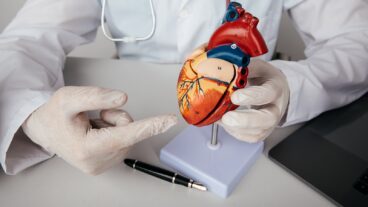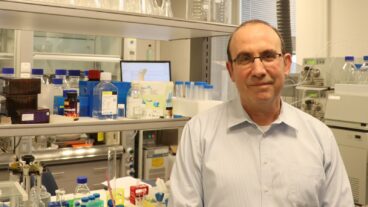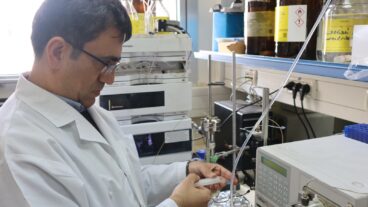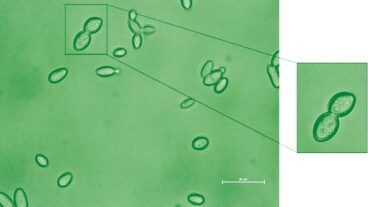Christopher Reeve visits the Weizmann Institute last year. “The Weizmann Institute, as I saw first-hand… has established preeminence in the field of paralysis research.” Dr. Mike Fainzilber found his inspiration to pursue a cure for paralysis early in life.
The Israeli was deeply affected by the 1976 Israeli commando operation at Entebbe in Uganda, which successfully freed 104 hostages, the passengers and crew of Air France Flight 139, after they had been hijacked by PFLP terrorists. During the daring operation, Israeli soldier Sorin Hershko was wounded in the neck and became completely paralyzed.
Fainzilber, who at the time was a young teenager working on a summer biology project on regeneration in marine invertebrates, recalls, “It seemed to me to be the height of painful irony that a starfish I was studying could be cut into six different pieces and each piece would regenerate, while a small wound in the wrong place could forever paralyze a human being in the prime of his life.”
Today, Fainzilber is a neuroscientist at the Weizmann Institute, and has just been recognized by the Christopher Reeve Paralysis Foundation (CRPF) with a two-year grant of $149,600 – the first time CRPF has funded spinal cord injury research in Israel. Only 15 outstanding neuroscientists worldwide were awarded funding in CRPF’s first grant cycle of 2004.
“Every nation and every generation in human history has had its own Christopher Reeve and Sorin Hershko. We hope that with the help of the CRPF we can make our own small contribution to the chance that the coming generations will be spared this scourge,” said Fainzilber.
The Christopher Reeve Paralysis Foundation (CRPF) is committed to funding research that develops treatments and cures for paralysis caused by spinal cord injury and other central nervous system disorders. The Foundation also vigorously works to improve the quality of life for people living with disabilities through its grants program, paralysis resource center, and advocacy efforts. Reeve, the theater and film actor who portrayed ‘Superman’, suffered a horseback-riding accident in 1995 during an equestrian event which left him paralyzed from the neck down.
“CRPF has proudly supported the work of many of the most accomplished neuroscientists in the world,” said Reeve, CRPF’s Chairman of the Board. “The Weizmann Institute, as I saw first-hand when I visited Israel last year, has established preeminence in the field of paralysis research.”
Last July, Reeve visited Israel in order to learn about Israeli advancements in the field of stem cell research related to paralysis and spinal cord injuries. The day he spent at the Weizmann Institute was the centerpiece of his trip.
During his visit, Reeve said that “Israel is the center of some of the world’s leading research related to paralysis. There are many new therapies in the pipeline as well as care strategies being employed that may also benefit millions of people around the world living with paralysis.”
His four-day trip was a scientific, fact-finding mission to learn about Israel’s research on treatments for spinal injuries and to visit with people living with disabilities in the region, during which he met with Israeli doctors and researchers working on remedies for paralysis caused by spinal cord injuries and other central nervous system disorders.
He told The Jerusalem Post that “I think that Israel is one of the countries that is leading the way in medical research, in particular with diseases and conditions that affect the central nervous system. Israeli researchers are some of the best in the world.
In his project, Fainzilber will identify changes in genes that are activated very early in the regenerative process, and attempt to modulate the injury-induced changes with the application of a unique peptide. Peptides are compounds made of two or more amino acids that combine to make proteins.
The data generated using this model has the potential to identify new molecules important for regenerative growth and the potential to move the field forward in an innovative and significant way. Identification of such genes will hopefully allow their future exploitation in new clinical approaches to enhance regeneration in patients with nerve injuries.
“We were very glad to learn that CRPF decided to support this project, since we hope that once we know the full complement of these genes, researchers will find ways to bypass the system and activate them in nerves which cannot normally regenerate,” said Fainzilber, adding, “CRPF support is crucial to us for two reasons, firstly because without this financial support we simply would not be able to carry out the project, and secondly because it is very encouraging to know that we have the attention and hopefully future input and support from some of the best people in the field of nerve regeneration.”
Fainzilber’s application for his project was reviewed by the Foundation’s Science Advisory Council, a panel of accomplished neuroscientists who volunteer their time and expertise to evaluate proposals based on scientific merit, relevance to CRPF’s research priorities, and promise for clinical application. This rigorous process ensures that CRPF funds only the most meritorious science that is targeted at developing effective therapies for paralysis and dysfunctions caused by spinal cord injury and other central nervous system disorders. CRPF’s Individual Research Grants are awarded twice yearly.












